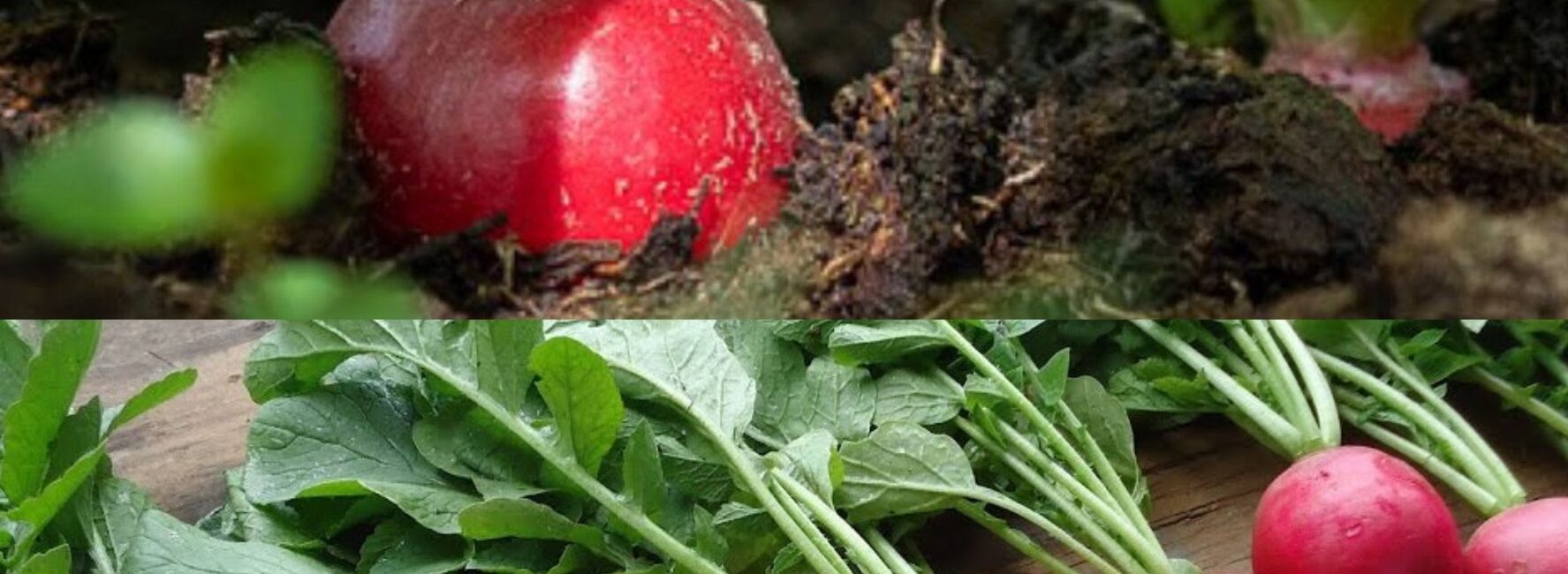Introduction
Growing vegetables can be an incredibly rewarding hobby, especially when you get to enjoy the fruits (or in this case, roots) of your labor right from your own backyard or balcony. Among the myriad of vegetables you can grow, giant purple radishes stand out for their striking color, unique flavor, and impressive size. If you’ve never tried your hand at growing radishes before, or are simply looking for a new gardening adventure, this guide will walk you through the easiest way to grow giant purple radishes, helping you cultivate not just vegetables, but a rewarding gardening experience.
Understanding the Giant Purple Radish
Before jumping into the growing process, let’s take a moment to appreciate what makes giant purple radishes so special. These radishes not only boast a vibrant purple skin that adds stunning visual appeal to your garden, but they also possess a sweet, crisp flavor that can elevate any salad, sandwich, or side dish. They typically grow large, often comparable to a grapefruit, which means you’ll only need a few to make a significant impact in your meals.
Giant purple radishes thrive in cool weather, making them an excellent crop for spring or fall planting. They are quick to mature, usually ready for harvest in about 3-4 weeks, which means by the time you’ve gotten your hands dirty, you’ll soon reap the benefits of your efforts.
Materials Needed: Ready, Set, Grow!
Before you start planting, gather the following materials to set yourself up for success:
- Giant Purple Radish Seeds: Look for high-quality seeds from a reputable supplier. Popular varieties include ‘Purple Daikon’ and ‘Black Spanish’, both known for their size and taste.
- High-Quality Potting Mix or Well-Draining Garden Soil: If you’re planting in containers, choose a potting mix designed for vegetable gardening. For garden beds, ensure your soil drains well.
- Large Containers or Garden Bed: Depending on your available space, you can opt for either. Radishes do well in containers as long as they are deep enough.
- Compost or Organic Fertilizer: Enrich your soil’s nutrients with organic matter; this is crucial for robust radish growth.
- Watering Can or Hose: A reliable way to give your radishes the moisture they need to thrive.
- Full-Sun Location: Ensure the planting area receives at least 6 hours of direct sunlight daily.
- Mulch (Optional): Organic mulch retains moisture, suppresses weeds, and regulates soil temperature.
Steps to Grow Giant Purple Radishes
Step 1: Selecting Giant Purple Radish Seeds
Begin your gardening journey by selecting the right variety of giant purple radish seeds. Look for seeds that are known for their impressive size and vibrant color. Reading reviews or joining gardening forums can provide insights into which specific varieties perform best in your growing zone.
Step 2: Choosing Containers or Garden Bed
Decide where you want to plant your radishes. They are flexible enough to thrive in both containers and garden beds. If you choose containers, opt for ones that are at least 12 inches deep to accommodate the radishes’ growth. If planting directly in a garden, pick a sunny plot that has good drainage.
Step 3: Preparing Soil
Soil preparation is fundamental for growing giant purple radishes. If using containers, fill them with high-quality potting mix that retains moisture but drains well. For garden beds, amend your soil with plenty of compost to enhance its texture and nutrient content. Aim for a pH of 6.0 to 7.0; this level balances nutrients available to the radishes.
Step 4: Planting Giant Purple Radish Seeds
When you’re ready to plant, follow the seed packet instructions regarding depth and spacing. As a general rule, radish seeds should be sown about 0.5 inches deep and 1-2 inches apart, depending on the variety. If planting in rows, keep your rows about 12-18 inches apart to allow for easy harvesting later on.
Step 5: Fertilizing
To ensure healthy growth, mix in compost or an organic fertilizer before planting. Radishes don’t require heavy feeding, but incorporating organic matter will provide them with a steady source of nutrients, fostering their rapid growth.
Step 6: Watering
Keep the soil consistently moist but not waterlogged. Regular watering is critical, especially in the initial stages after planting, to encourage germination and steady growth. A good rule of thumb is to aim for about an inch of water per week, adjusting for rainfall.
Step 7: Sunlight
Position your radishes in a spot that receives at least 6 hours of full sunlight each day. Radishes thrive in sunny environments, and adequate light will enhance their growth, color, and flavor.
Step 8: Mulching (Optional)
If you want to promote even better moisture retention and weed suppression, consider applying a layer of mulch around your radishes. Organic options like straw, grass clippings, or shredded leaves will break down over time, enriching the soil.
Step 9: Thinning Seedlings
Once your radish seedlings emerge, you will need to thin them. This entails removing the weaker seedlings to provide enough space for the stronger ones to grow. Aim for 2-4 inches of spacing between each radish. Thinning is important to plump up the remaining roots; overcrowded radishes can end up stunted or deformed.
Step 10: Care and Maintenance
Regularly check on your radishes during their growing period. Monitor the moisture levels and continue watering as needed. Generally, radishes grow quickly, and within a few weeks, you’ll see a significant transformation. Keep an eye out for pests or diseases, and address any issues promptly to ensure your radishes remain healthy.
Step 11: Harvesting Giant Purple Radishes
Timing is everything when it comes to harvesting radishes. Most giant purple varieties will be ready in about 3-4 weeks, but some might take a bit longer. The key is to harvest when they reach the desired size and color. Gently loosen the soil around the base and pull them out, being careful not to damage the roots.
Once harvested, radishes can be stored in the refrigerator for up to a week, but they are best enjoyed fresh!
Tips for Success with Giant Purple Radishes
- Cool Season Planting: Keep in mind that radishes prefer cooler temperatures. For optimal growth, plant them in early spring or late summer.
- Successive Planting: To ensure a steady supply of radishes throughout the growing season, consider planting them in succession every few weeks. This staggered approach prolongs your harvest and adds variety to your meals.
- Avoid Overcrowding: Overcrowding leads to competition for resources, resulting in small or spindly radishes. Stick to the recommended spacing guidelines for the best results.
- Pests and Diseases: Watch out for common pests like aphids and root maggots. Natural deterrents, such as neem oil or insecticidal soap, can be effective. Additionally, rotating your crop each year can help prevent soil-borne diseases.
Conclusion
Growing giant purple radishes is an exciting opportunity that combines the joy of gardening with the satisfaction of homegrown produce. With simple steps and a bit of care, you can cultivate these stunning roots right in your garden or container. Whether you’re looking to add a vibrant touch to your dishes or simply want to try your hand at something new, giant purple radishes could be the perfect choice for your next gardening endeavor.
So gather your materials, prepare your garden or containers, and begin your radishing adventure! As you watch these beauties grow, you’ll find that the process is not only easy but truly enjoyable. Happy gardening!




